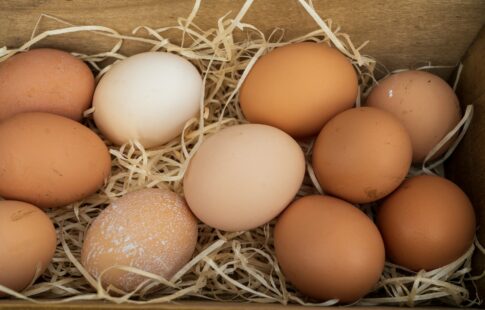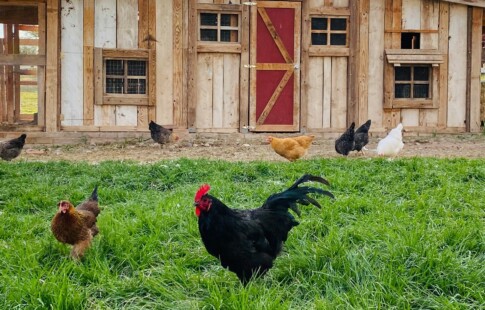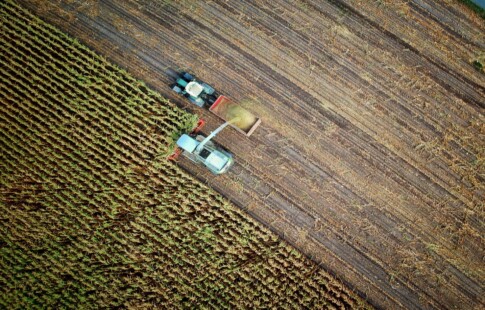
The History of Agriculture
We are reader-supported. When you buy through links on our site, we may earn affiliate commission.
Agriculture is the backbone of nearly every economy. Without agriculture, you wouldn’t have food. It is cultivating food through farming practices, and it produces most of the world’s food.
Before agriculture, humans survived by hunting, scavenging and gathering the foods they found in the wild. There were no people planting seeds and waiting for them to grow. However, when agricultural practices came to the scene, it changed the way human societies worked and ended up being able to feed a global population.
The history of agriculture dates back many years, and we have come a long way from hunters and gatherers to mass producers of food.
When It All Began
Generally, historians put the beginnings of agriculture in Western Asia, although different populations worldwide each had their own start in agriculture independently. Agricultural communities developed about 10,000 years ago, when people began to turn away from their hunter-gatherer stage and move toward a more cultivated lifestyle. They began to grow their own foods and raise animals to support themselves and their families.
After another few thousand years, many of the animals that humans had were domesticated. These would include animals such as cattle, chickens and horses.
The switch to agriculture and domestication resulted from the changing climate, a growing population, overhunting and changing practices, and technologies. These changes still affect the agricultural industry today.
Agriculture Leads to Civilizations
As a result of fewer hunter-gatherers and more farmers and ranchers, civilizations began popping up throughout the world. Although farming was more work for humans, since they had to produce their food rather than just find it, it did provide more calories and opportunities.
With more food, there were more people. A known food supply made humans reliant on agriculture, and because they knew they had a source of food, families and communities grew. Before agriculture, people would have to worry about how they got their food for the day. Hunters and gatherers took a chance every day on their food sources.
At this point in history, with agriculture, people didn’t have to worry about where their next meal would come from, and therefore, they began to do other things. Those who weren’t farmers in the societies would take on different roles.
This was when people became soldiers, artists, scholars, priests and other typical vocations of that time. Additionally, this shaped the way people thought, especially in a political and religious sense. They created rules and classes of people.
Hunters and gatherers would equally distribute their harvest. However, agriculture led to a system we all are aware of today, which is democracy. People began to take ownership of their land, currency and food sources. Some got more food than others, and farmers were degraded to a lower class.
This went on for centuries, even as populations moved and migrated. Technological advances allowed for even more food, and eventually, the global population boomed. However, due to overusing the farmland, people began to import their foods from other countries because their soils were too depleted to grow anything.
Growing to 7 Billion People
People began to be reliant upon agriculture. In just a century, between 1900 and 2011, the population more than tripled what it was. The population boomed as a result of the World Wars and Industrial Revolution. Although the growth was exponential, farmers and ranchers took up feeding such a large number of people.
Hunger is still a problem, though. Not everyone has access to food, and the food that is produced isn’t evenly distributed across the globe. The fact that agriculture can make so much food, though, is quite an accomplishment.
Agriculture Today
In United States history, agriculture represents about five percent of the economy and provides millions of jobs. American agriculture wasn’t present until European colonists made their way to the Americas. Native Americans did have some agricultural practices, and European colonization brought more.
Domesticated crops became normal and are most of what we use today. Technological advancements, like crop rotation, cross-breeding, animal husbandry improvements and others, allowed for crop yields to grow. Additionally, with the onset of GPS systems and robotics, farmers can do most of their work from a screen.
Sustainability in Agriculture
Due to climate change and global warming, sustainability has become a buzzword in the agricultural world. Farmers need to protect the environment and still provide food for the billions of people to come.
Farmers and ranchers are looking for ways to be sustainable in their practices. Over the past few decades, many of the methods have degraded the land or harmed the surrounding environments. Synthetic fertilizers, tilling and pesticides have all led to pollution. Trees are cut down for more farmland.
Of course, we need to support a growing population, but there are better ways to go about it. Now, cities are implementing urban and community gardens. Some regions have adopted regenerative farming. Other areas of the world are using indoor vertical gardens to provide fresh food to hunger-stricken populations.
These practices in the history of agriculture ensure a sustainable future in agriculture.
Share on
Like what you read? Join other Environment.co readers!
Get the latest updates on our planet by subscribing to the Environment.co newsletter!
About the author
Jane Marsh
Starting from an early age, Jane Marsh loved all animals and became a budding environmentalist. Now, Jane works as the Editor-in-Chief of Environment.co where she covers topics related to climate policy, renewable energy, the food industry, and more.





